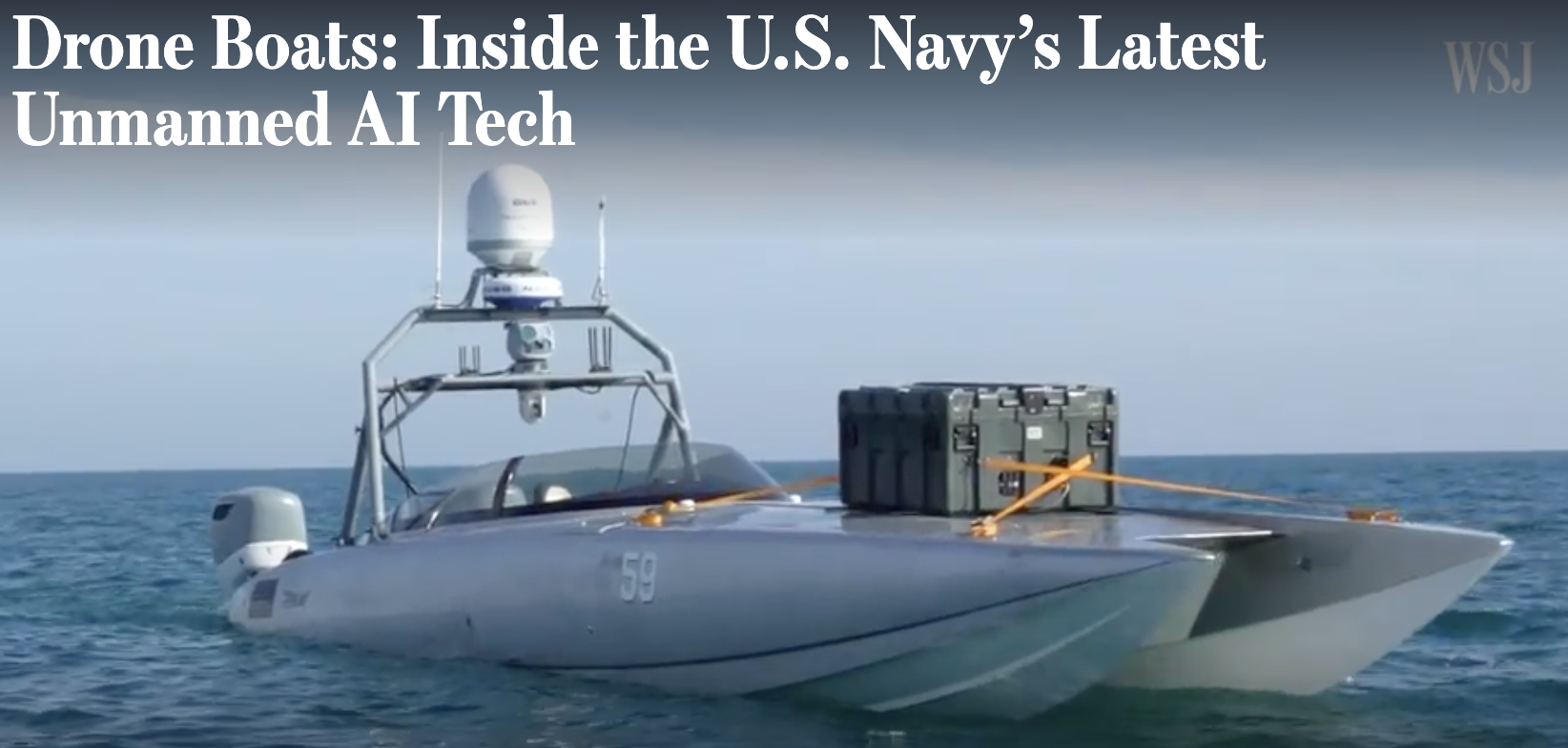Task Force 59 and Unmanned Maritime Assets
Before we move to the Digital Horizon exercise and the WSJ coverage of the event, we take a closer look at an earlier event which featured one of the participants in the Digital Horizon event. This video highlights a T38 Devil Ray unmanned surface vessel operates during a demonstration off the coast of Bahrain, April 29, 2022. This video was done by by Sgt. David Resnick U.S. Naval Forces Central Command / U.S. 5th Fleet.
Now to Digital Horizon which was done in the same waters highlighted in the video.
NAVCENT published this story about Digital Horizon on its conclusion:
U.S. 5th Fleet concluded Digital Horizon, Dec. 15, a three-week unmanned and artificial intelligence event in Bahrain that involved 17 industry partners.
The event included 15 advanced systems, 10 of which operated in the Middle East for the first time. Task Force 59 led industry partners during phased evolutions ashore and at sea to advance fleet efforts that will enhance regional maritime awareness.
“The pace of innovation throughout Digital Horizon was unbelievable,” said Capt. Michael Brasseur, commander of Task Force 59. “We pushed beyond technological boundaries and discovered new capabilities for maritime domain awareness to enhance our ability to see above, on and below the water.”
During Digital Horizon, Task Force 59 leveraged artificial intelligence to create an interface on one screen, also called a “single pane of glass.” The screen displayed relevant data from multiple unmanned systems for watchstanders in Task Force 59’s Robotics Operations Center.
The task force also launched an unmanned aerial vehicle (UAV) from USCGC Emlen Tunnell (WPC 1145), marking the first time Task Force 59 operated a UAV from a U.S. Coast Guard cutter. The launch also enhanced Task Force 59’s ability to create a mesh network for unmanned systems to relay imagery to command centers ashore and at sea in a communications denied environment.
“It has been an incredible opportunity to work with new systems and new partners to drive the innovation process forward for the U.S. Navy,” said Lt. Jay Faylo, the task force’s director of artificial intelligence.
Over the past year, Task Force 59 has operated unmanned surface vessels in regional waters for more than 25,000 hours, which equates to 12 years of nine-to-five testing five days a week.
NAVCENT is headquartered in Manama, Bahrain and includes maritime forces operating in the Arabian Gulf, Gulf of Oman, Red Sea, parts of the Indian Ocean and three critical choke points at the Strait of Hormuz, Suez Canal and Bab al-Mandeb.
This video published by the Wall Street Journal focuses on Task Force 59 and Digital Horizon.
The video provides an overview of the Navy’s efforts and some of the systems which participated.
The featured photo is of the MARTAC Devil Ray which the commentator highlighted for its speed and flexibility.

